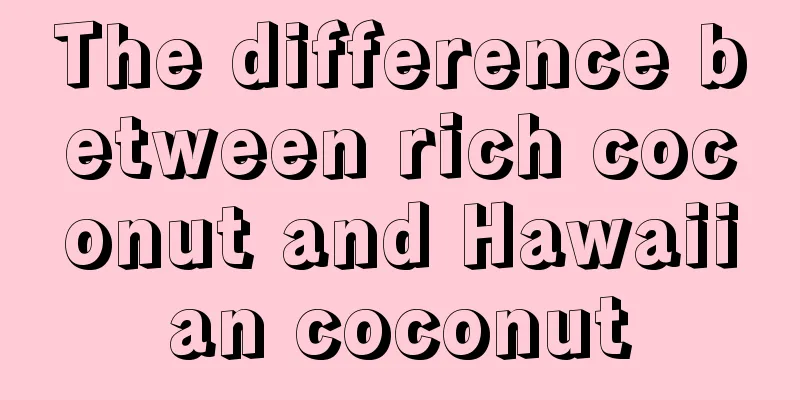The difference between rich coconut and Hawaiian coconut

1. Morphological characteristics1. Rich Coconut:In terms of appearance, its stem is smooth and slender, the leaves are dark green, lush and shiny, and the shape is elegant and luxurious. In autumn and winter, it will have round green fruits, which are reddish-brown when ripe, and bear fruit from October to December. 2. Hawaiian Coconut:The stems have bamboo-like nodes, the leaves are dark green, and they are more likely to bloom and produce seeds. The fruit is round and orange-red. The most important appearance feature to distinguish the two is to look at the leaves. The one that grows more scattered, has leaves on both the upper and lower parts and is relatively lush is the rich coconut. The one that has bamboo-like stems and no leaves on the lower part, or very few leaves, and relatively sparse leaves on the upper part is the Hawaiian coconut. This way of distinguishing is the most intuitive. 2. Growth habits1. Rich Coconut:It is suitable for warm, humid, semi-shady environment, especially in the seedling stage. It has high requirements for shading and cannot accept direct sunlight. Although it doesn't like light, it needs scattered sunlight in winter. 2. Hawaiian Coconut:It likes semi-shade, relatively high temperature and humidity, preferably above 20℃, and grows fast. There will be no problem if you keep it indoors for one to two months, as it will go dormant below 13℃. Although it likes moisture, you cannot water it too much, otherwise the roots will easily get sick. Just keep it moist at ordinary times. The habits of the two are quite similar, and their preferred growing environment is basically the same. Both cannot be exposed to sunlight (there must be a lot of scattered light in spring and winter), but the Hawaiian coconut is not cold-resistant, while the rich coconut can withstand temperatures as low as zero degrees. 3. Application Value1. Rich Coconut:It has good cold and shade tolerance and strong environmental adaptability, so it is widely developed and used in landscaping and is popular among everyone. 2. Hawaiian Coconut:The stems are segmented, the leaves are oily and glossy, and the overall style is clear and elegant. It is suitable for decorating offices and study rooms, and has a good effect in greening indoor spaces. |
<<: Hawaiian coconut cultivation methods and precautions
>>: The difference between fake mint and real mint
Recommend
How to grow green vegetables
1. Land preparation First select a piece of land,...
Can the water used to raise fish be used to irrigate succulents?
Can fish water be used to water succulent plants?...
What are the breeding methods and precautions for Yemen iron
Yemen Iron Introduction Yemen iron belongs to the...
Cultivation methods and precautions of golden thread vine
Sunlight You can put it in the sun in the early m...
What are the plants that bloom in autumn?
Spring brings flowers and autumn brings fruits. Au...
What are the cultivation methods and precautions for potted osmanthus trees?
In addition to the greening trees we see outside,...
Jasper flower cultivation methods and precautions
1. Breeding methods 1. Soil selection It is extre...
Pests of red banana and their control
Scale insect pests of red banana Scale insects ar...
Is Osmanthus suitable for deep or shallow pots?
Should Osmanthus use a deep or shallow pot? Osman...
The difference between honey locust and honey locust
1. Differences between branches and trunks Gledit...
How to grow Primula
1. Breeding environment 1. Soil: When growing Pri...
How to water cymbidium
Water quality requirements First, let’s talk abou...
How to prune the branches of the Fortune Tree?
The rich tree is also called locust tree, locust ...
What medicine is most effective for thrips and how to prevent and control it
1. Which medicine is most effective? 1. Rice seed...
When can peach blossom cuttings take root? Can peach blossoms be propagated by cuttings?
1. When to take root It usually takes about a mon...









